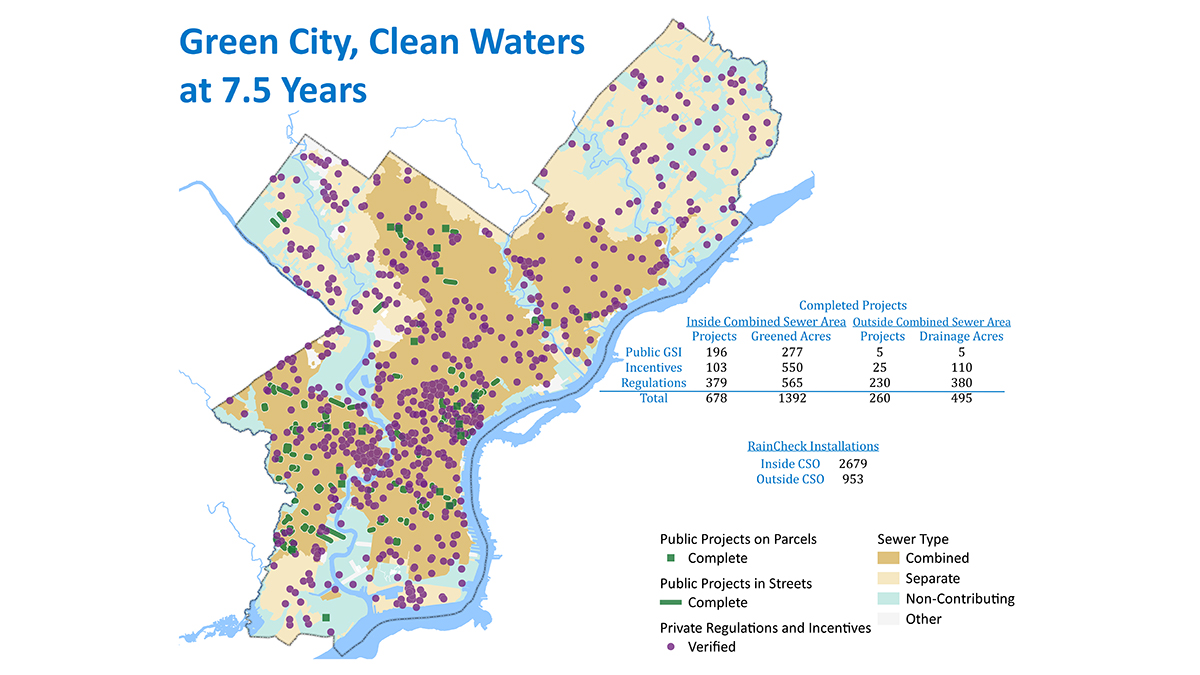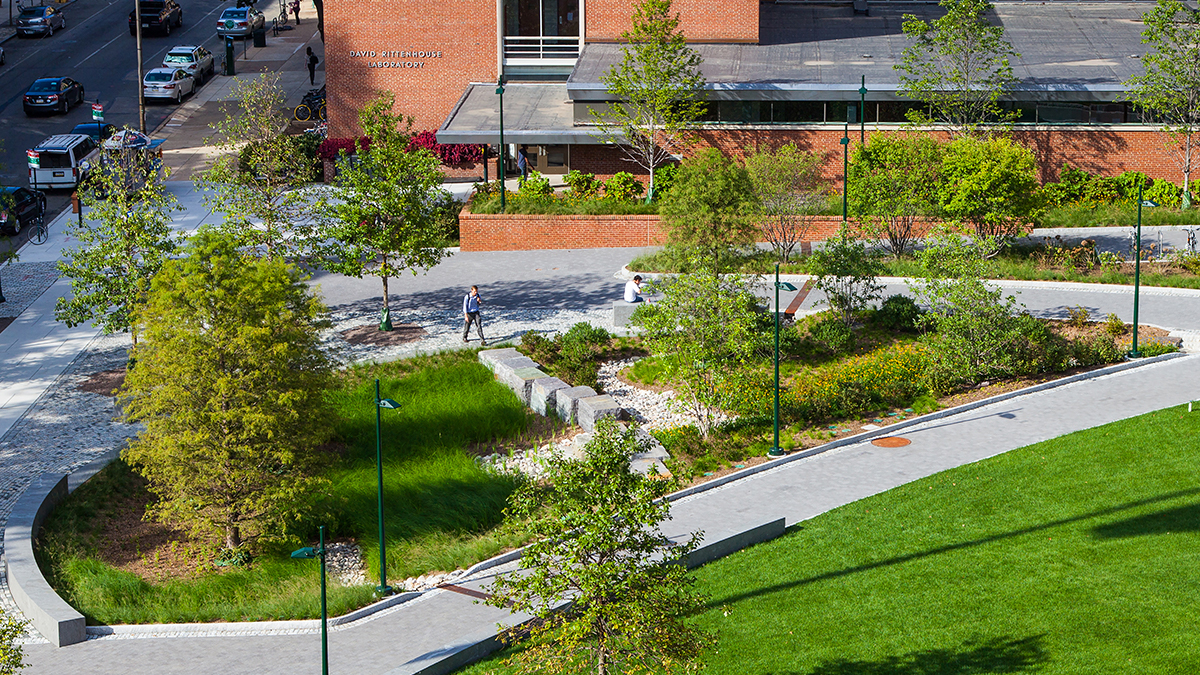
Green City, Clean Waters Project Map, Philadelphia Water Department.
In 2011, Philadelphia created the first Environmental Protection Agency-approved, comprehensive, citywide plan to use green infrastructure to absorb stormwater: Green City, Clean Waters. The agreement with the EPA calls for Philadelphia to create 2,148 “greened acres” by 2021, which will keep an estimated two billion gallons of polluted stormwater runoff out of the Schuylkill and Delaware Rivers. Former Philadelphia Water Department Commissioner Howard Neukrug and Deputy Commissioner and landscape architect Mami Hara, ASLA, forged an innovative, interdepartmental partnership with the Parks & Recreation and Streets departments and the Philadelphia School District to install green infrastructure in parks, streets, and schoolyards. The city also formulated new regulations and incentives that spurred commercial and industrial property owners to build green infrastructure on their roofs, parking lots, and property. As of 2018, some 579 green infrastructure projects have led to 1,187 greened acres. The benefits of the program go beyond stormwater management: There have been measurable reductions in carbon emissions and the urban heat island effect, as well as increases in local property values.
Background:
According to the Philadelphia Water Department, green infrastructure projects are being accomplished through three approaches:
Using city-owned land: Projects such as rain gardens in public parks or tree trenches along streets are initiated, funded, designed, constructed, inspected, and maintained by the Philadelphia Water Department and other city agencies and partners.
Incentivizing privately owned infrastructure: The Philadelphia Water Department recalculated monthly utility bills for all property owners to reflect not only water used but also stormwater runoff from the property. Residential property owners pay a fee based on an average calculated from square feet and impervious surface cover; commercial and industrial property owners are charged based on the specific square footage of their impervious surfaces and the total square footage of their properties. Property owners can take advantage of loans, grants, and technical assistance to develop green infrastructure systems that reduce or eliminate the stormwater runoff portion of their monthly bills.
New projects: When a site is developed or redeveloped, the project must meet the City of Philadelphia’s stormwater regulations, which call for infiltrating the first 1.5 inches of runoff from impervious surfaces.
The benefits of Green City, Clean Waters go beyond stormwater management. All the new trees and other green systems help clean and cool the air, reducing asthma and heat-related illnesses. The citywide network of green infrastructure is estimated to absorb or help the city avoid some 1.5 billion pounds of carbon dioxide annually, which is equal to removing 3,400 cars from the road. Lastly, green infrastructure is expected to increase property values by $390 million over 45 years, also boosting the property taxes the city takes in.
- Green City, Clean Waters, Philadelphia Water Department
- Stormwater, Philadelphia Water Department
- Interview with Ignacio Bunster-Ossa: The New Geography of Green Infrastructure in Philadelphia, The Dirt, 2018
- The New Philadelphia Story Is About Green Infrastructure, The Dirt, 2013
- Philadelphia’s Cutting-Edge Green Infrastructure Plan, The Dirt, 2010
- A Cost-Effective Way to Treat Depression: Greening Vacant Lots, The Dirt, 2018
- Incorporate green infrastructure into all new and existing urban and suburban development.
- Prioritize preservation and enhancement of tree canopy.
- Protect, expand, and/or restore natural systems, including wetlands and adjacent upland areas, that provide buffers along coastlines and inland waterways.
- Select biohabitat-supporting and pollinator-friendly native or adapted plant species appropriate to the site/region and changing climate conditions.
- Include reuse/redevelopment of brownfields and grayfields in smart growth plans.
- Incorporate green infrastructure in all transportation projects.

ASLA 2014 Professional Honor Award in General Design, Shoemaker Green, University of Pennsylvania, Andropogon/Barrett Doherty.